| Umělec 2007/1 >> On comming close to the skin of the real:a conversation with Linda Abdul | Просмотр всех номеров | ||||||||||||
|
|||||||||||||
On comming close to the skin of the real:a conversation with Linda AbdulUmělec 2007/101.01.2007 Roberto Cavallini | afghanistan | en cs de |
|||||||||||||
|
Lida Abdul was born in Kabul, Afghanistan. At the beginning of the Eighties she was forced to leave Kabul and her country and she moved to Germany and India as a refugee before going to the U.S.. Going back to Kabul, after a long period, she pitted herself against the city and the people disfigured by more than twenty years of invasions, war and dictatorship. Abdul‘s work is located at the intersection between art and architecture; it invites the viewer to see the unfolding of new forms but never resolves the contradictions and the paradoxes, the purpose of which seems to be to make us doubt our claims of understanding.
Roberto Cavallini: White House and Clapping with Stones (2005), were exhibited for at the 51st Venice Biennale, when for the first time Afghanistan had been represented with a pavillion on the ground floor of Palazzo Giustinian-Lolin, center of the Levi Foundation in Venice. These two video performances go beyond mere documentation; the viewer comes to terms with a performative act, an ephemeral intervention that marks the places you tried to investigate. This subtle perceptual shift illuminates these performative actions that mark these destroyed and torn places but at the same time try to invoke a promise of purification. In order to reconsider the identity of those places after the negation caused by destruction, your work implies a care and respect—a sort of recovery of the ruins as a first, fundamental act. As such, ruins are not just an object of shame (like the ones of the World Trade Center, concealed to the sight of the American people), but specifically conceived as a primal and constitutive condition, as a basis upon which a new, hypothetical beginning can start. Lida Abdul: The public obsession to memorialize that one finds all around us today - in the rhetoric of healing, the rhetoric of peoples and nations apologizing to each other, the rhetoric of forgiveness and de-contamination of the errant - is really a ruse whose purpose is to silence dissent, argumentation and certainly the new. It's a trick, which is about as old as cities: it says, remember our suffering, remember those who have sacrificed because they are part of the present and do not stray from the principles that one's ancestors gave their lives for. It says let‘s continue with the way things have been going and thus the ceremony and thus the banal performance of remembrance whose most powerful contemporary representation is the laying of the wreath at the tomb of the unknown soldier. A few years ago I made a piece called My City has no Monuments, a title that says something that I think is absolutely true. I think there is a major difference between the way the past is remembered in the so-called "West" and its so-called other, non-West, and this difference has to do with how people self-represent themselves. If you grow up thinking that you are the best and your culture, art and literature is the best manifestation of all that has been thought, then certainly their rejection or criticism can only be seen as reactionary, or an expression of envy or jealousy. In this scheme of things even the memorializing of a disaster, a trauma, has to show "how powerful" you are and cannot be a process that fosters some self-reflection. Or a dialogue with a stranger. Why can't a ruin itself be transformed into a meditation on something other—a non-referential work of art—a visual or sculptural poem that one hopes will open up new spaces for rethinking about society, about ethics and identity itself. I suppose as people's sense of personal identity becomes more and more aligned with their sense of history then it makes sense that for them memorials must at least project the fiction of personal autonomy even though their everyday lives are ridden with anxieties that the corporate culture helps them "manage." So you are right, to paint ruins as I did; without rebuilding them is to keep the past intact without "dressing it up" for public tourism, a practice that seems to me will become even more popular in the future. Everything is a tragedy; everybody is a hero according to this logic as long as he or she happened to be from our side. Those other without any public sense of mourning obviously do not have any interiority, because to mourn, to memorialize is a sign of depth, or being in the right. R. C.: Generally speaking, every work you made seems to be in a sort of delicate equilibrium between, on the one hand, an emotional and touching poetic condition and, on the other, a political urgency. In this juxtaposition, in this space of encounter of ethics and aesthetics, there is a slight, surreal perception of everyday life. Do you think this might be a fruitful mean of recreating a prolific soil, in which both the personal and the communal imagination could develop, in a critical and independent way? L. A.: I cannot help but answer this question by referring to a truly surreal broadcast I saw on CNN recently. It was a press conference by a senator who was responding to charges that torture was rampant at Guantanamo Bay, or as they say, Gitmo. After rejecting the charges that anyone was being tortured, the senator continued inviting people to try the wonderful food that was being served at Gitmo: baked salmon and chicken in a bed of steamed vegetables. This is like Club-Med, he said, so what torture are we talking about. This whole exchange was so fascinating that frankly if this were depicted in a novel I‘d just say that it is overdetermined. The point I am trying to make is that those of us who respond to the world around us have to contend with instances such as these, which are so over the top that my exhortations of the poetic of the meditative are completely lost. Yes, the poetic has always been the political for me and when I hear people tell me that I am too close to the skin of the real so to speak, I wonder what they really mean. I think it‘d be true to say that for me the origin of all ideas for work start in "laughter," in the absurd and then over time that the initial shock of the absurd transforms itself into something else; a form begins but interestingly the evolution of that form is for me as much a personal coming-to-terms with the world around me as much as it is a desire to desire to hint at another world in which remembering and thinking and mourning are not seen as mutually exclusive. R. C.: When talking about the situation of your country of origin, Afghanistan, you quoted a sentence from Blanchot: "A disaster touches nothing but changes everything." Art, on the other hand, is too often considered in the opposite way: it touches everything, but, in the end, it doesn‘t change anything. What kind of space can Art have within contemporary society? L. A.: I think people's lives today are so cluttered with stuff and the rhetoric of self-help books and experts who tell them what to think, that the difficulty that a certain type of art offers is seen not as a challenge that might foster some thinking but as an affront, as elitism, as something that personally attacks who I am as a person. So today: I reject you and therefore I am. You are difficult and thus an idealist. I think that the coup curated by the pundits of popular culture is to convince people that the most important thing about art is that it be accessible or fun. It's the triumph of the confessional mode in art also. So what role can art play today: Well, once the arts have been consigned as a luxury that one engages in order to appear cultured then it serves a purely utilitarian purpose at the mercy of the economic. It‘s perverse to say this but I think that only collective social and cultural shocks can open up new spaces for the relevance of the playfullness of art. R. C.: Some of your works, like Military Body (2004), depict in an authentic way the issue on how Art is struggling to take advantage of those few spaces neglected by mass media. What do you think about it? L. A.: The mass media want to keep us happy or, as Deleuze would say, like machines of desire who are addicted to newer and newer pleasures with little or no memory of whether we've experienced the same in the past. Memory and history are just impediments today and with the Internet people feel that they can look up anything without actually knowing the connections between things. So yes IQs increase but so what if we are all just informations processing units who are less and less able to see the larger picture. Without context of course we fall into simplications or caricatures and everything can potentially be used for something else. R. C.: How do you, an Afghan artist living in Los Angeles, deal with "Western" art history and how do you consider the problem of identity expressed through visual representation? L. A.: I think of making art as a conversation between all those things inside me that I sometimes have control over and sometimes don't. I am neither this nor that. There is a beautiful Sanskrit phrase that says, "Neti, neti:" Neither this, nor that but all together without boundaries. I know this sounds pop-psychological but really that is how I work. Something intrigues me and then I gravitate toward its world and in doing so my relationship with what is familiar changes also. So first there is the beauty of an idea/form regardless of where it is coming from and then there is some grounding for which I resort to my training. When is a work complete? Whatever one can call it, that decision that brings the work into the world is not quite a decision. It could the most arbitary thing but this arbitrariness is one that has a long history that I suppose is so close to me that I am blind to it. R. C.: Derrida once wrote: “There is no inheritance without a call to responsibility." Almost all your video-performances based in Afghanistan—above all, the ones that deal with ruins—seem to address an idea of inheritance that is strictly connected with notions such as resistance and responsibility. The interlacing tension between inheritance, that is something that is coming from the past, and responsibility, that is to commit oneself in the present time, opens up access to re-consider the conditions of a possible, even though still fragile, future. How do you relate, also personally speaking, to this constant tension? L. A.: I hope this tension is present in all traditions and all times and not just during times of war. Because if traditions, the call of the past, become purely mechanical, then any introduction of new ideas into them will be seen as an attempt to undercut the foundations of a people‘s identity. And thus the demands of those people throughout the world who would want to keep their cultural spaces as cleansed of new images, ideas and smells and of course people. I am a little dubious of responsibility though because in places like Afghanistan and of course Europe also, responsibility can become oppressive especially when it transmogrifies into duties with it attendant demands to preserve the culture, the country, etc. I feel that as humans we‘ve forsaken so much of our inhertance from our hunter-gatherer days---creation myths, taboos etc.--but the conservative, tribal ethical codes are still around us. Yes there was in our past probably a need for an ethic of revenge and counterrevenge--an eye for an eye etc.-- or for cultures of honor and shame, but we don‘t live their anymore so why now transform our ethical codes. This new world seems to be taking us farther and farther into that old world where some of us are obsessed with decontaminating ourselves of the ‘other‘ not realizing that the new was always a hybrid in some sense. R. C.:What is the reception to your work in Afghanistan and what is your relationship with the people involved in your performances? L. A.: I am not sure how the people in my videos respond to the work but I want to believe that some level being part of the performance is a therapeutic exercise for them also. There is so much misery in Afghanistan that any activity, artistic or otherwise, distracts people from the heavy burden of the everyday, which is tragic and backbreaking. Yes, like many others, these are a proud people but I wonder what this pride does to an individual when he or she has only destruction around him or her? Do we look for blame? Or do we accept it and then say that it‘s God‘s test? We also are a terribly optimistic people and there is hope sprouting everywhere with or without artists like myself. The rehabilitation of Afghanistan will only take place when we can channel this resentment born of the clash of pride and seeming failure. R. C.: One of your last videos addresses, in a sort of ironic and surreal way, how people deal with the difficult and delicate process of reconstruction. The protagonists are both children (the new generation) and the bricks taken from the ruins (in a symbolic way, the basic materials to start rebuilding). How do you see your work and your condition as an artist in Afghanistan now in relation to this process of renovation? L. A.: I suppose one can see this rebuilding both literally and figuratively. Do we have to rebuilt exactly the same way or do we take this rebuilding opportunity to create something else, possibly play a little with the future without necessarily forgetting what we‘ve gone through because if we don‘t then we allow the past‘s tragedies to completely determine our identity and the past will never pass. Yes, never forget, but let‘s not create a competition between sufferers, which is what I seem to see around me in the world today. Disaster deranges people and in that initial moment of recovery a lot can happen for which one cannot really give a reason. And this is fine. Those arbitrary decisions that get made at the beginning will have consequences and it is a risk that every individual takes. That every artist takes and that every society should also take.
01.01.2007
Рекомендуемые статьи
|
|||||||||||||
|
04.02.2020 10:17
Letošní 50. ročník Art Basel přilákal celkem 93 000 návštěvníků a sběratelů z 80 zemí světa. 290 prémiových galerií představilo umělecká díla od počátku 20. století až po současnost. Hlavní sektor přehlídky, tradičně v prvním patře výstavního prostoru, představil 232 předních galerií z celého světa nabízející umění nejvyšší kvality. Veletrh ukázal vzestupný trend prodeje prostřednictvím galerií jak soukromým sbírkám, tak i institucím. Kromě hlavního veletrhu stály za návštěvu i ty přidružené: Volta, Liste a Photo Basel, k tomu doprovodné programy a výstavy v místních institucích, které kvalitou daleko přesahují hranice města tj. Kunsthalle Basel, Kunstmuseum, Tinguely muzeum nebo Fondation Beyeler.
|
















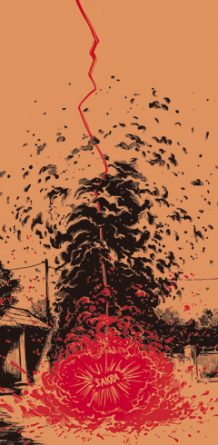






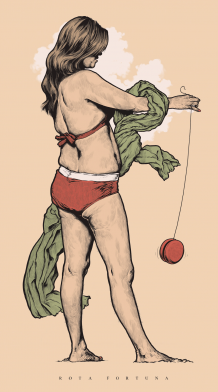




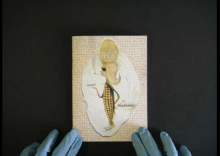
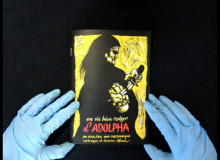
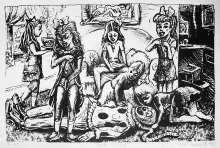
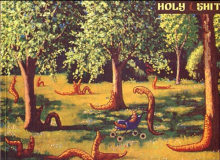


 New book by I.M.Jirous in English at our online bookshop.
New book by I.M.Jirous in English at our online bookshop.
Комментарии
Статья не была прокомментированаДобавить новый комментарий